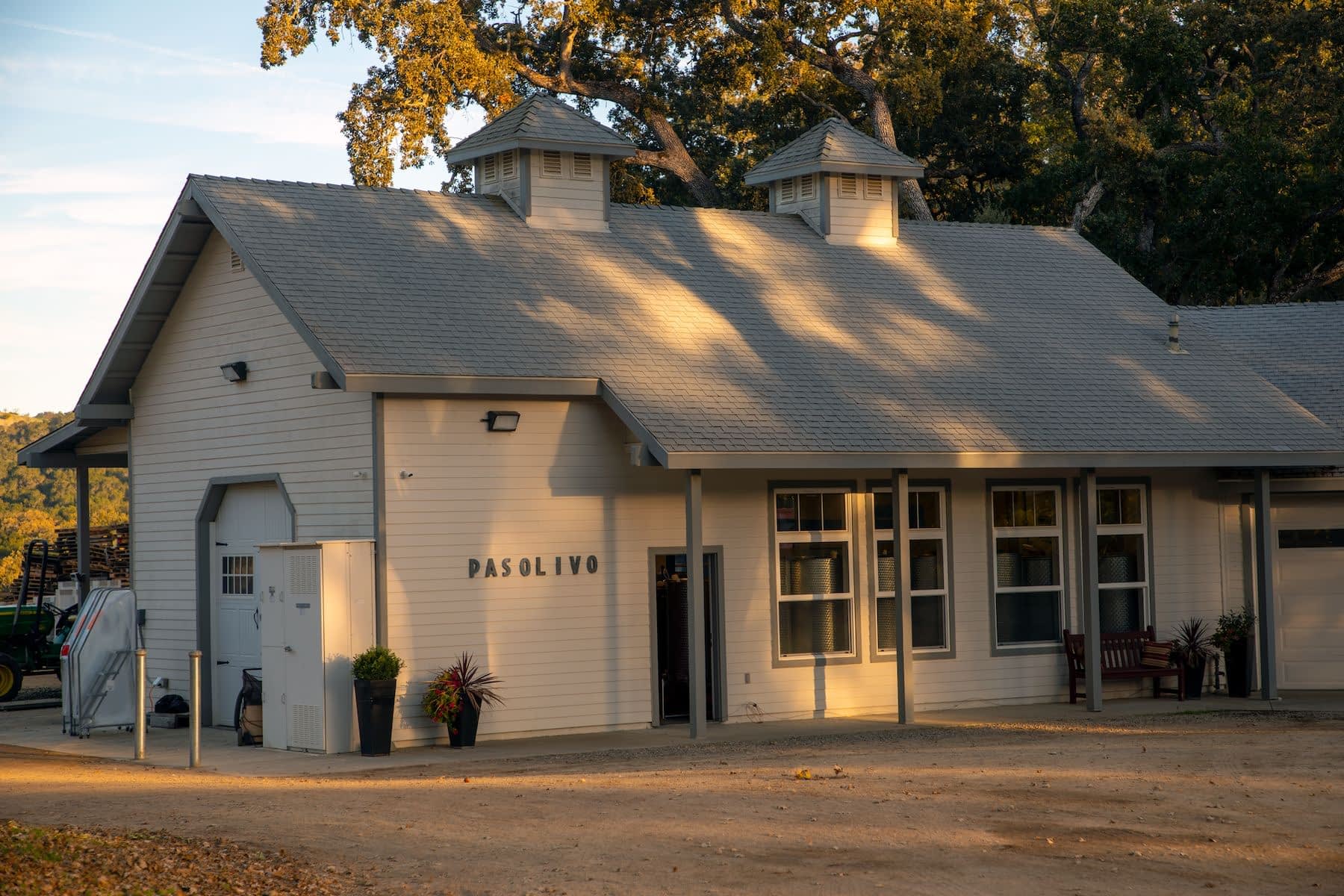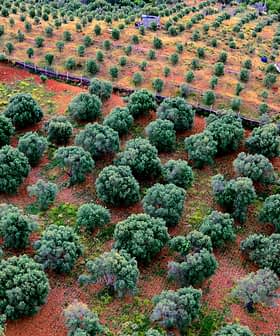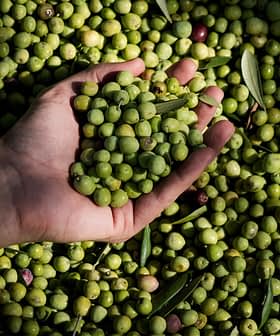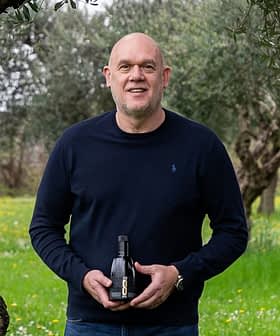At Pasolivo, Olive Oil Production Is Art and Science
The central California producers earned five more awards at the 2022 NYIOOC, bringing their total at the competition to 27 since 2016.
 Photo: Pasolivo
Photo: Pasolivo Pasolivo, located in California, has developed a scientific process for producing award-winning extra virgin olive oil, earning numerous accolades at competitions. The company’s success is attributed to a meticulous harvest process, unique blends, and a commitment to quality despite challenges like rising costs and supply chain issues.
Situated amidst the rolling foothills of the Santa Lucia Coastal Range, just west of Paso Robles, California, the producers behind Pasolivo have turned the art of crafting award-winning extra virgin olive oil into a nearly scientific process.
The crux of any scientific process is having a set of procedures that can easily be repeated and consistently yield the same result. Over the years, Pasolivo has achieved just that.
The central California company earned four Gold Awards and a Silver Award at the 2022 NYIOOC World Olive Oil Competition. Once again, Pasolivo was one of the winningest producers from the United States, bringing its total award count at the world’s largest olive oil quality competition to 27.
“[Winning so consistently] feels amazing,” Marisa Bloch, the company’s general manager who will celebrate her tenth anniversary at Pasolivo in November, told Olive Oil Times. “And it’s just further validation that the hard work that our team is putting into the whole process is really working and paying off.”
See Also:Producer ProfilesIf the olive oil production process is akin to a scientific experiment, the NYIOOC panel of judges serves the role of peer reviewers. Each year, Bloch and the rest of the production team take their feedback and incorporate it into the harvest next season.
“Every year, it gets a little bit better than the year before because we’re more prepared,” she said.
The harvest itself is an intense 2.5‑week period in November, involving a highly coordinated operation to pick all the olives and get them to the onsite mill within a couple of hours.
“We start picking olives usually at 6:30 or 7 a.m., and milling can go until 11 p.m.,” Bloch said. Days are usually long but depend on how long it takes to get all of the harvested olives transformed and stored.

Marisa Bloch
Bloch begins each harvest by meeting with her contractor to outline her expectations and make a plan.
“To kick off the harvest, we speak to all of our pickers,” she said. “As a grower, our first priority is obviously the health of the trees and making sure that they’re being cared for.”
The company grows 12 different olive varieties – Ascolana, Frantoio, Leccino, Maurino, Pendolino, Coratina, Lucca, Mission, Manzanilla, Picholine, Arbequina and Picual – in its traditionally spaced groves.
“So number one is just making sure that we’re all on the same page and we have our expectations,” Bloch said.
Maintaining a good relationship with the contractor is one of her keys to success. Building a strong rapport ensures that Pasolivo can always bring in the 100 to 150 workers required to get all of her olives harvested on time.
“It takes a lot of the management from my team to make sure that everything’s going smoothly out there,” she said.
Once the picking gets underway, Bloch heads to the company mill, and the first olives begin to arrive from 8:30 to 9 a.m.
“We try and get a couple of loads in first because obviously, once we fire up our mill, we don’t want to have any downtime,” she said.
“One of the greatest things, honestly, especially that first day of the season, is to hear that mill going again and see the oil residue in the air and just the smell of the whole building,” Bloch added.

Photo: Pasolivo
One of the keys to a successful experiment is limiting the number of independent variables to hone to focus of the experiment. However, this is not possible for most modern olive oil producers.
While the harvest is in full swing, Pasolivoalso welcomes guests to observe the transformation process, tour the groves and taste olive oil fresh from the mill, which is directly adjacent to their tasting room.
“We’re going seven days a week,” Bloch said. “This year, we went through Thanksgiving. It’s really all hands on deck. The entire family assists with the process as well.”
“Honestly, it’s one of the most stressful times of the year, but also one of the greatest times of the year,” she added. “I’m just bringing everybody together, and there’s nothing like tasting that first oil of the season.”
Once the harvest is complete and the extra virgin olive oils are securely stored, the scientific process is pushed to one side – though not completely abandoned – and art comes to the forefront.
Bloch and her tasting room manager, both of whom are level two olive oil sommeliers, work with Pasolivo’s miller to decide on the season’s blends.
In several previous interviews with Olive Oil Times, Bloch attributed Pasolivo’s success at the NYIOOC to harvesting all olive varieties separately and crafting new blends each season depending on how the monovarietal oils turned out. This year was no exception.
“We all taste the oils each year after harvest, and we rank them,” she said. “Then I do all of the blending.”
“I take all of our notes and our feedback from that tasting and decide my blends,” she said. “I just try out different things. We always aim for certain flavor profiles for each of our four extra virgin olive oils, and I get to play around with the different varieties based on that.”

Photo: Pasolivo
Traditionally, Pasolivo produces four extra virgin olive oil blends: a mild one (Cucina), a medium one (Classic) and two robust blends (California and Tuscan).
“This year we also sent along our Il Singolo [to the NYIOOC],” Bloch said. “Any time we find that there is a single variety that stands out on its own, we try and bottle it. So that one was not blended. It was just our Ascolano monovarietal.”
Once Bloch has decided on the blends, all the extra virgin olive oils are bottled and sold directly to the consumer, either online or at their store in Paso Robles. Most Pasoliveo’s sales are made online to Californians, but she said they ship olive oil to all 50 states.
While their diverse client base keeps the company afloat, this year it has presented some new challenges. With inflation at a four-decade high in the United States, Bloch said production costs have risen sharply on everything from glass bottles to shipping costs.
“Fuel costs, packaging costs, everything has gone up,” she said. “We haven’t had to raise our prices yet, but it is something that we’re thinking about.”
Besides rising costs, supply chain issues have also caused headaches for Bloch. She is still waiting for an order of bottles from Italy that she placed in September. It usually takes the bottles four months to arrive.
As a result, Bloch is making sure that all the milling equipment is in good condition and already placing orders for a replacement ahead of the 2022 harvest.
“We’ve already ordered our mill parts for this next season because we want to make sure that everything is here in plenty of time,” she said. “If you wait until shortly before harvest, there’s a good chance that things aren’t going to make it.”
Along with preparing the mill for the next harvest, Bloch also prepares the trees. The team at Pasolivo follows a careful regimen of pruning, watering and fertilizing to try and limit the fluctuations in the trees’ natural alternate bearing cycles.
“We seem to found that find a sweet spot, with all of the practices that we have in our orchard. We’re fortunate to have a pretty good production every year,” Bloch concluded, and 2022 should be no exception.
Share this article









